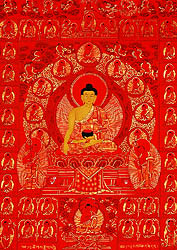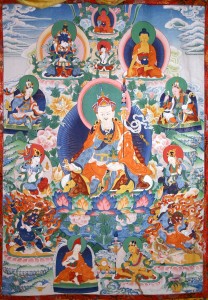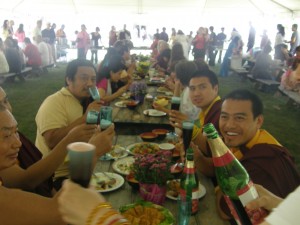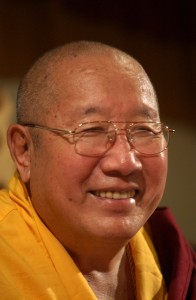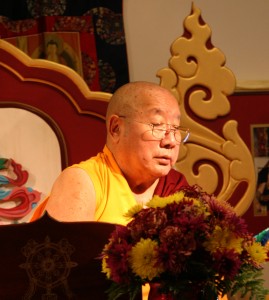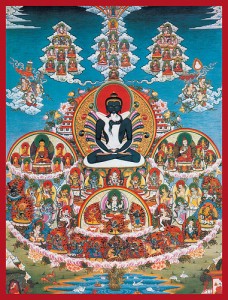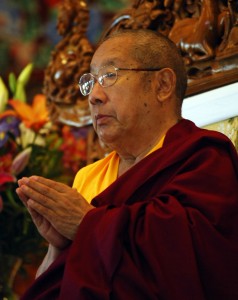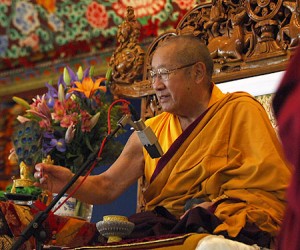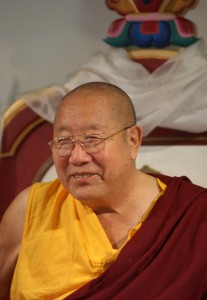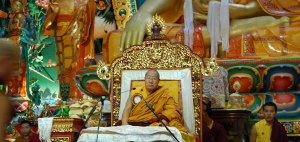
The following is an excerpt from a teaching by His Holiness Penor Rinpoche on Meditation, reprinted here with permission from Palyul Ling International:
Emptiness is not something like just remaining there without having thoughts or anything at all. It has been said in the texts that if one does not know how to meditate properly on emptiness, then one can fall into the wrong pot. So one has to investigate the true nature of the mind in order to really establish its absolute nature as emptiness, and this must be maintained through the practice of meditation.
Emptiness which is merely emptiness, and the emptiness which is the nature of mind, are two different things. The one emptiness is kind of like nothingness. This kind of nothingness emptiness in the Dharma teachings is explained by the example of the rabbit’s horn – something which does not exist at all. But the emptiness of the mind, which does not have any form or colors or shape, is in certain ways non-existing, but at the same time this mind is everything. It is that which creates all these samsaric phenomena and all the nirvana phenomena.
When you do meditation practice, it is good to cut through all these conceptual thoughts. To be without any such thoughts and then to remain in meditation is very beneficial. This is what is known as samatha or tranquility meditation. If one carries through with such meditation practice for awhile, one begins to have some stability of the mind, and then it is easier to achieve the vipassana or insight meditation practices.
All Dharma teachings and practices have to follow through the proper lineage. That is to say, the lama, the master, must be really qualified to give these teachings. Then the disciple, the practitioner, if he or she has really strong devotion or faith, can understand through his or her actual practice. There is no other way to give and receive these teachings.
So the lama, the master, must have that quality by which he can “read” the disciple’s mind. When the lama has that quality – the knowledge by which he realizes the mind-stream of the practitioner – then according to that knowledge he can give the right introduction of the nature of the mind. For example, when the lama examines a practitioner, he can directly experience whether or not the practitioner has the actual recognition of the nature of the mind.³
Other than that kind of direct mind-to-mind interaction, there is no way to explain, “Oh, the nature of mind is something like this.” There are no words to handle it. If there was any kind of expressway diagram about the nature of the mind, then we could just draw it and then explain, “Here! This is the nature of mind!” So it is important to carry through all the practices, constantly watching through the samatha meditation practice, getting used to that kind of concentration of mind, so that there can be a way for one to have the true recognition of mind.
The Tibetan word, “lama,” means the Unsurpassable Teacher. The “la” is based on the quality of the realization and the “ma” symbolizes the mother, the loving-kindness and affection that one needs to have, just like a mother gives to her children. All the past, present and future Buddhas obtained Enlightenment by relying upon the lama². There is not any Buddha who just by him or herself attained Enlightenment.
The lama, the master, means someone that has complete knowledge about all these practices. So all who just have a red cloth are not lamas. Those also who wear yellow clothes, they are not necessarily lamas! Someone who has true purification and realization internally is who is known as the lama³. And the lama’s mind-stream must have the genuine Bodhicitta to benefit all sentient beings.
